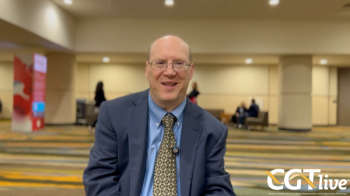
Gene Therapy Optogenetics Combination Efficacious in Retinitis Pigmentosa: José-Alain Sahel, MD
The professor from University of Pittsburgh School of Medicine discussed the combination of an optogenetics device and gene therapy in treatment of RP.
This content originally appeared on our sister site,
A combination gene therapy and optogenetics device was well-tolerated and efficacious for the treatment of end-stage blindness in patients with retinitis pigmentosa, according to data from the PIONEER trial (NCT03326336).
These data were presented at the
HCPLive spoke with Sahel to learn more about the safety and efficacy that was observed, as well as the implications of the findings of the PIONEER trial.
Sahel described the PIONEER trial as the first in-human optogenetic trial combining gene therapy to deliver proteins which are photosensitive to remaining cells in the retina, in combination with a medical device that projects light into the eye to activate the proteins.
"The third step is rehabilitation of a patient to learn how to adjust for goggles and how to understand the type of vision that is being formed, Sahel said. "So, it's a combination of three technologies."
Sahel noted the vector was well tolerated, with no significant safety signal besides inflammation, which he attributed to the gene therapy. However, nothing was considered damaging or detrimental to the retina.
Additionally, he informed on the 9 patients who have been treated so far, with the Data and Safety Monitoring Board (DSMB) approving the extension of the highest dose of the gene therapy to more patients.
"The other part is the efficacy we had published a few months ago on the first ever patient that's got vision restoration using this approach," he said. "And I was able to report at the meeting on the second patient was treated more recently, but as also demonstrated visual benefit."
Sahel discussed the future of the study, noting that more patients are being brought back who left the study due to the COVID-19 pandemic, as well as improving the stimulation goggles.
"We are working on exploring more patients at the highest dose to see what level of vision will be obtained," he said.
"Optogenetics in the Clinic: Safety and Efficacy Updates on the Phase I/II Clinical Trial PIONEER," was presented at AAO 2021.
Newsletter
Stay at the forefront of cutting-edge science with CGT—your direct line to expert insights, breakthrough data, and real-time coverage of the latest advancements in cell and gene therapy.











































